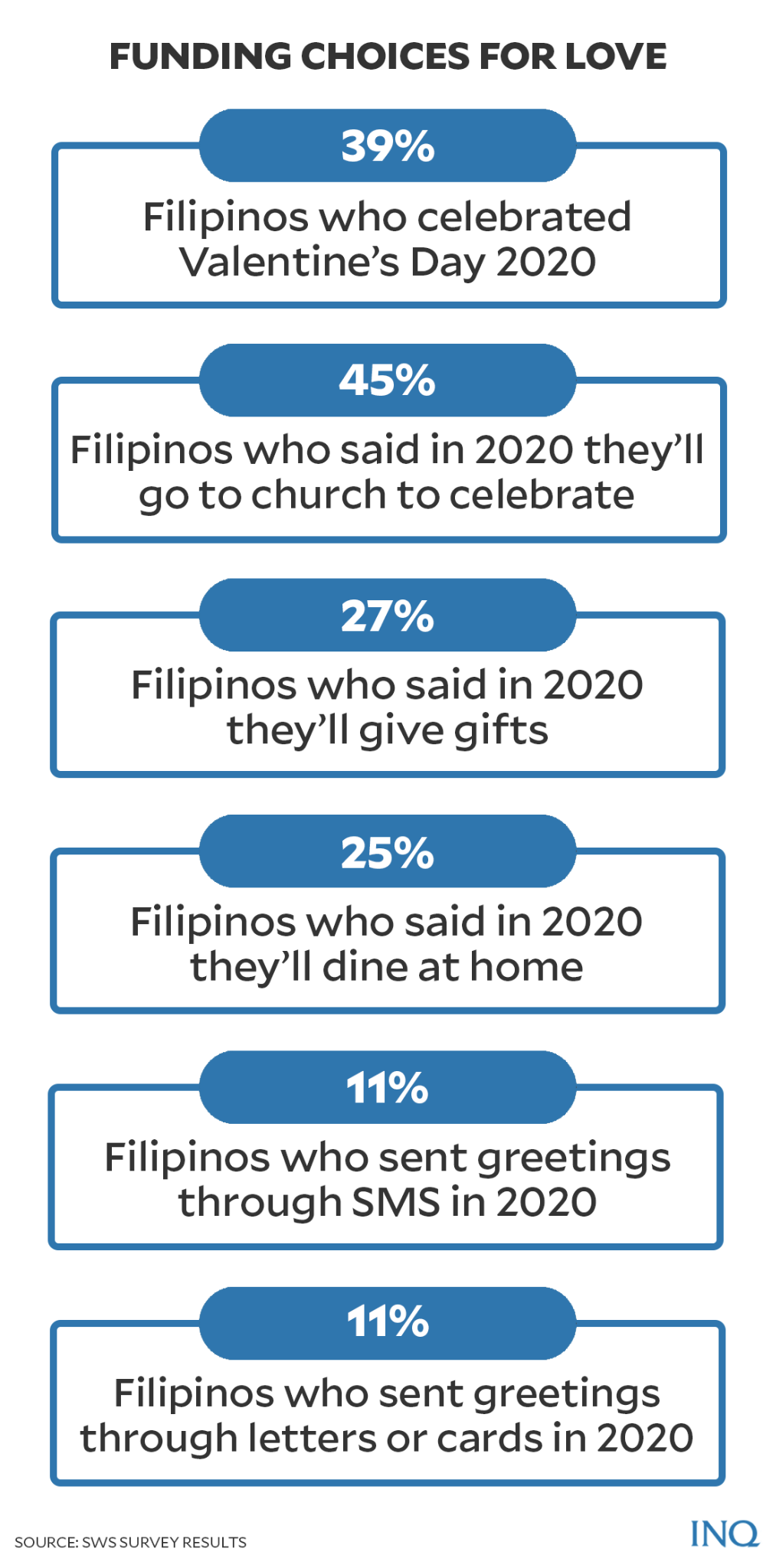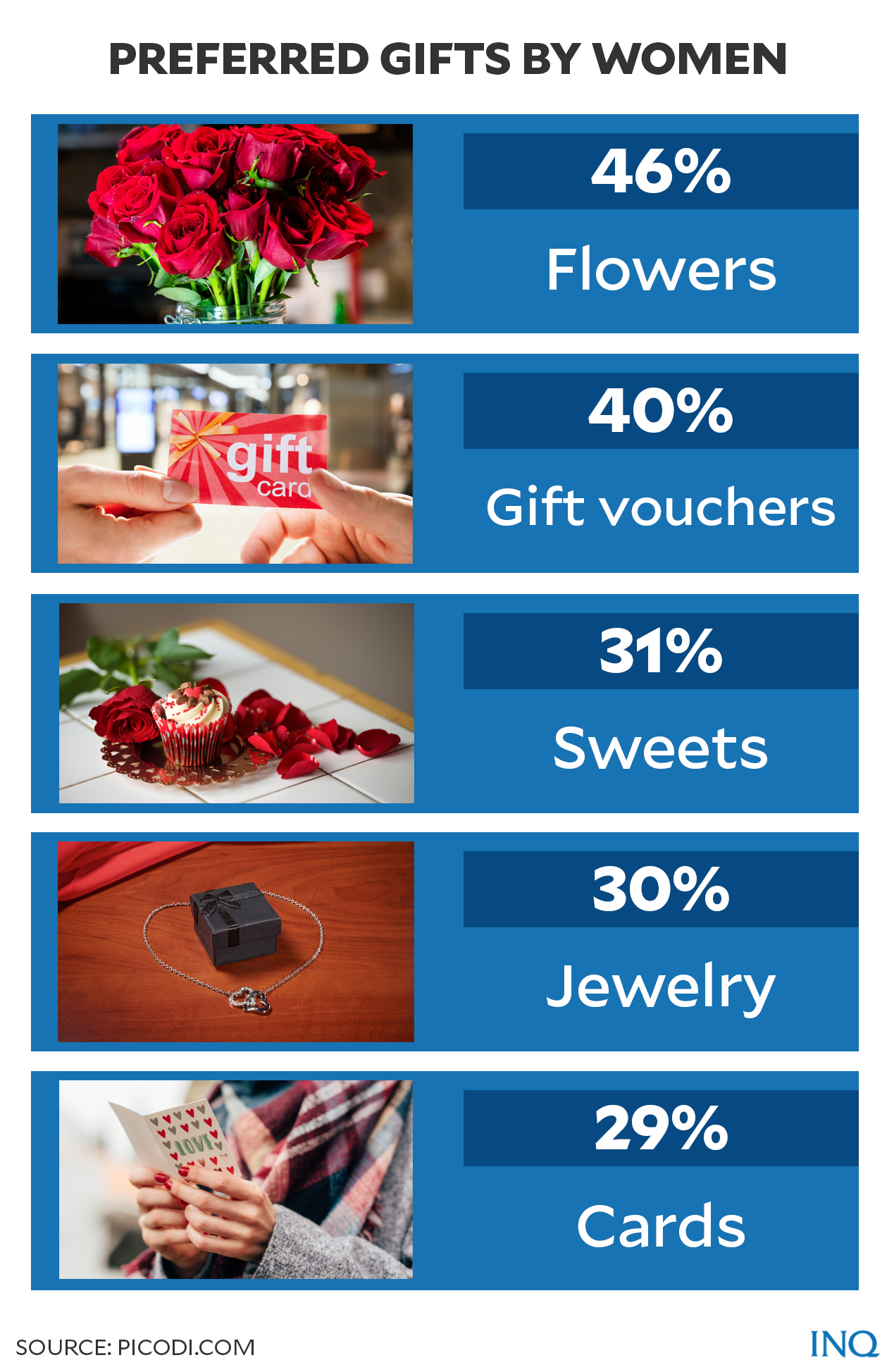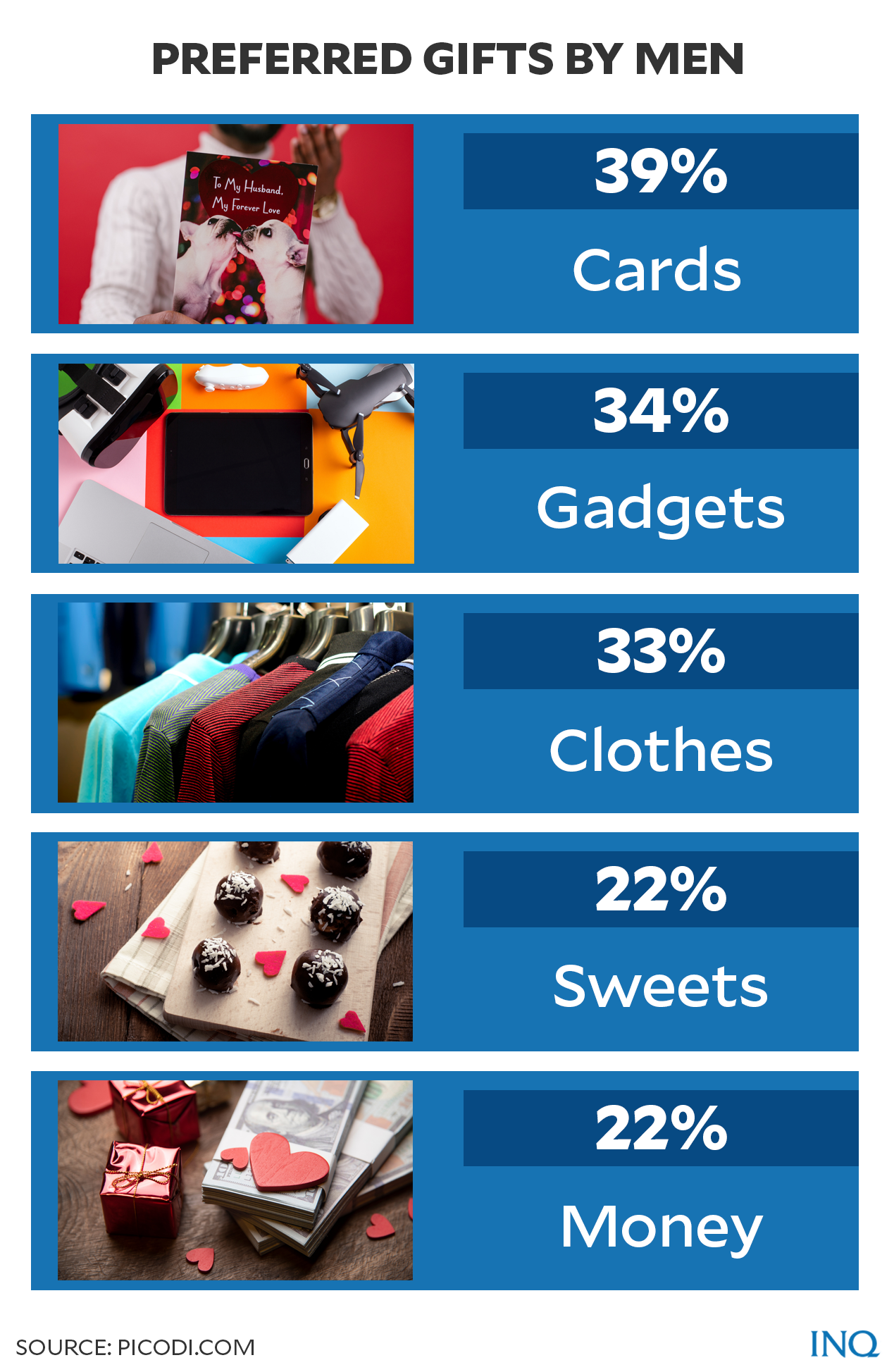Valentine’s commercial value also highlights rich, poor gaps

Graphic: Daniella Marie Agacer
MANILA, Philippines—A little more than half of Filipinos, according to results of a recent survey, described their love life as “very happy.”
This was highlighted when Filipinos celebrated Valentine’s Day on Feb. 14, a tradition that most likely started in ancient Rome, according to First Post, when men and women offered sacrifices on the feast of Lupercalia, believing it would bring children.
It was believed that the tradition assumed a different name—Valentine’s—when in the 3rd A.D. Roman Emperor Claudius ordered the killing of Valentine, a priest who helped Christian couples wed.
Pope Gelasius, in the 5th A.D., expelled the celebrations for Lupercalia. Instead, he integrated it with the celebration for St. Valentine who was executed on Feb. 14. Since then, Valentine’s Day “grew romantically”.
RELATED STORY: True romance chooses no season
A celebration of love, Valentine’s Day could be celebrated even in the simplest ways––few love words, hand–made cards, and even a warm embrace––but Valentine’s Day has become “grossly commercialized”.
Article continues after this advertisementThe Daily Targum said in 2020 that the “commercialization” grew in the United States: In the 1840s, the newspaper The Public Ledger endorsed Valentine’s, saying that people needed “more soul-play and less head-work”.
Article continues after this advertisementIt said there were a lot of instances which allowed for an “abandon of feeling” and that the meaning of Valentine’s changed from signifying a person to a day of exchanges.
This was possibly the reason Valentine’s Day, which is celebrated with flowers, gifts, cards, and dinner dates, also highlights an immense gap between the rich and the poor.
Expenses for love?
In 2020, while the Social Weather Stations (SWS) said out of the 39 percent of Filipinos who would celebrate Valentine’s Day, 45 percent would “go to church,” some were still willing to spend on gifts.

Graphic: Daniella Marie Agacer
READ: Valentine’s Day: The costs of love
The SWS survey results showed that 27 percent said they would give gifts while some would prepare special food at home (25 percent), send greetings online or through SMS (11 percent), and send greetings through letters or cards (11 percent).

Graphic: Daniella Marie Agacer
The website picodi.com said Filipinos give gifts to their significant others (71 percent), friends (20 percent), family (19 percent), and co-workers (seven percent).
It said women’s most desirable gifts are flowers (46 percent), gift vouchers (40 percent), sweets (31 percent), jewelry (30 percent), and Valentine’s Day cards (29 percent).
Men’s most desirable gifts, picodi.com said, are Valentine’s Day cards (39 percent), electronic devices (34 percent), clothing (33 percent), sweets (22 percent), and finances (22 percent).

Graphic: Daniella Marie Agacer
It said Filipinos are willing to spend an average of P1,759 for gifts––men are willing to spend P1,945 while women are willing to spend P1,610, which is P335 lower than men’s.
Reality in PH
The problem, however, is that this is not the reality for all Filipinos, especially the poor, who struggle to make ends meet, especially since the COVID-19 crisis brought livelihoods to a standstill.
Last Monday (Feb. 14), farmers went to the office of the Department of Agriculture (DA) in Quezon City to condemn a government law which they said has “destroyed the lives of millions of farmers”.
Instead of celebrating Valentine’s Day with all the expressions that come with what people say is a “special day,” they were there, fighting for higher palay prices and significant interventions for Filipino farmers.
The Philippine Statistics Authority (PSA) said that in 2021’s first half, the poverty incidence, or proportion of poor Filipinos whose income is not enough for basic food and non-food needs, was 23.7 percent.
This translates to 26.14 million Filipinos who lived below the average P12,082 poverty threshold for a family of five every month. The “subsistence incidence,” the PSA said, was 9.94 percent.
The 9.94 percent translates to 10.94 million Filipinos whose income is not enough even for the basic food needs. The average threshold for a family of five was P8,393 every month.
This was possibly the reason that while restaurants, flower shops, and gift shops are filled with people on Valentine’s Day, there are individuals seen outside, selling roses and gifts.
Happiness is not expensive
Picodi.com said 22 percent of women consider “movies at home” as one of the nicest ways to celebrate Valentine’s Day while 20 percent said cooking together is already enough.
The data analysis website said 24 percent of men said intercourse is one of the nicest ways to celebrate the special day while 18 percent are already contented with “movies at home”
The SWS revealed last Sunday (Feb. 13) that in the last three months of 2021, 56 percent of men and 51 percent of women said their love life is “very happy.”
It said the percentage of those with a very happy love life is highest among married men (68 percent), men with live-in partners (65 percent), and single men (26 percent).
A research study by the Michigan State University that was posted by the Journal of Research Personality, revealed that “marriage may actually protect them (husbands and wives) from a fall in happiness over time”.
The menshealth.com said: Married men are actually happier after marriage than they would be if they stayed single, based on a research study conducted by Michigan State University.
Likewise, the SWS said happiness with love life is higher in men who are 35 years old and older (59 percent to 60 percent) than men who are 18 to 34 years old (40 percent to 52 percent).
Happiness with love life is higher in women who are 25 to 54 years old (51 percent to 65 percent) than those who are 18 to 24 years old (47 percent) and those 55 years old and older (41 percent).
Health is happiness
In a Dec. 12 to 16, 2021 poll, the SWS found that 57 percent of Filipinos choose health over love and money. At least 31 percent chose love and 11 percent chose money.
READ: Most Filipinos prefer health over love or money – SWS
SWS said compared to December 2019, a few weeks before the COVID-19 crisis hit the Philippines, the preference for health fell by 13 percent. Preference for love and money rose by eight percent and four percent.
The percentage of those who choose health over love and money is highest in women with live-in partners (68 percent), single women (63 percent), and married women (56 percent).
The percentage of those who choose health over money is highest in single men (58 percent), men with live-in partners (54 percent), and those who are married (52 percent).